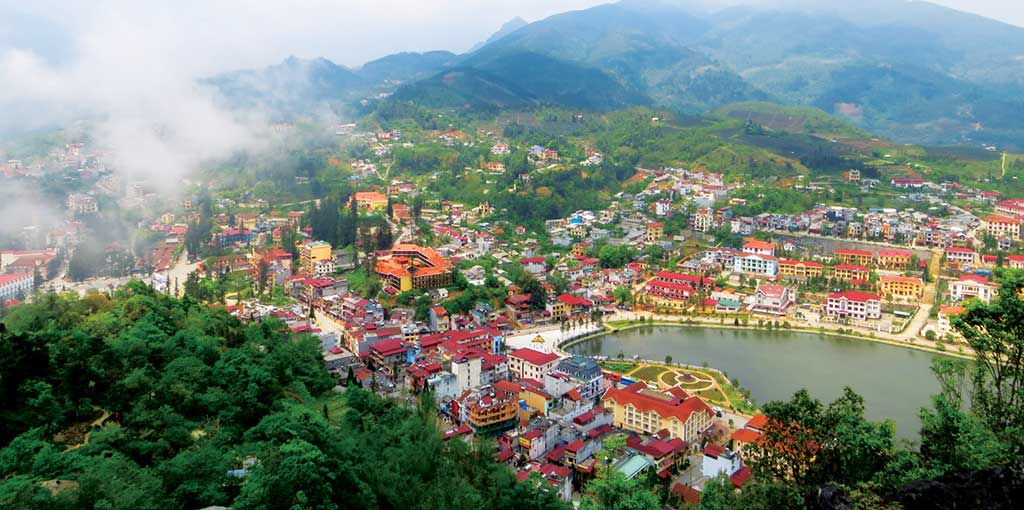Perched high above Vietnam’s Muong Hoa Valley, the sleepy little town of Sapa is a world apart from its urban contemporaries, quiet and compact amid the vast open space of Vietnam’s remote northwest. Now the go-to destination of the region, its rolling hills and verdant, many-tiered rice terraces are the main attraction, coupled with an array of fascinating minority cultures, whose traditional dress, rituals, religious ceremonies, and ways of life continue to exist in much the same fashion as they have for centuries.
Beyond Sapa’s borders, the surrounding hills and valleys are studded with minority villages (VND20,000), particularly those of the Black H’mong and Red Dao. Most of these remote areas bear a resemblance to each other, partly because many groups have coexisted for many years. Visiting any of the minority villages affords visitors a window into the daily lives of Sapa’s minority communities, as well as the pleasure of trekking through the verdant landscape. Wander past rows of modest wooden houses, where women dye indigo cloth or embroider intricate designs. Share a meal with a local family, or even spend the night. Here, several thousand feet above sea level, Sapa’s nearby residents are a world apart from the rest of the country.
Hiring a guide is a must for these excursions, as you’re far more likely to get off the beaten path with a local on hand.Just beyond Cat Cat, the next-nearest village, Sin Chai, belongs to the Black H’mong and prides itself on its traditional music. The villages of Ma Tra and Ta Phin to the north, patchwork settlements of Red Dao and Black H’mong households, make equally popular day trips (although locals may be more aggressive with sales pitches in these spots).
View of Sapa from Dragon Jaw Mountain. Photo © Dana Filek-Gibson.
Farther south, Ta Van is home to a Giay community not far from Lao Chai village, another Black H’mong settlement, both of which are popular options and can be visited in a single day. Just beyond these two villages is a Red Dao community, Giang Ta Chai, which can also be tacked onto a trek if you’re up for the walk. To the east, Hau Thao, Sa Seng, and Hang Da, all Black H’mong villages, are another worthy option for trekkers.
You’ll find useful maps of Sapa’s vicinity at the local tourism office (2 Fansipan, tel. 02/0387-1975, 8am-5pm daily), which can help you to get the lay of the land.
Hiring a guide (VND200,000-300,000) is a must for these excursions, as you’re far more likely to get off the beaten path with a local on hand, and these individuals will have answers for your questions regarding the ins and outs of Sapa’s minority cultures. Depending on where you go, a good guide can also help to dissuade villagers from pummeling you with sales pitches. Companies like ETHOS (tel. 09/1679-5330) and Sapa O’Chau (8 Thac Bac, tel. 02/0377-1166, 7:30am-6:30pm daily) run regular tours to several minority villages. On a tour, travelers hike out to the villages and are bused back to Sapa. The walking distance varies based on which villages are visited, ranging 2.5-10 miles. Tours cover no more than three villages in a day, with most going to only one or two (allowing travelers more time in each village).
Many villages can also be accessed by xe om, but this takes most of the fun out of the experience, as Sapa’s more secluded landscapes are best explored on foot. All villages in the area charge a VND20,000 entry fee for visitors. Homestays and overnight excursions covering several nearby communities can be arranged (with a tour outfitter or freelance guide).
Excerpted from the First Edition of Moon Vietnam.